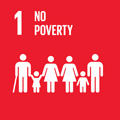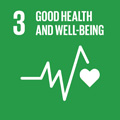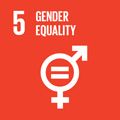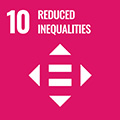- Docente: Livia Elisa Ortensi
- Credits: 8
- SSD: SECS-S/04
- Language: Italian
- Teaching Mode: Traditional lectures
- Campus: Bologna
-
Corso:
First cycle degree programme (L) in
Statistical Sciences (cod. 8873)
Also valid for Second cycle degree programme (LM) in Geography and Territorial Processes (cod. 0971)
-
from Sep 17, 2024 to Dec 13, 2024
Learning outcomes
The course aims to deepen the study of demographic phenomena with particular reference to their social determinants. The goal is to enable the student to analyze the complex system of interactions between determinants and demographic phenomena to interpret the historical and current evolution of populations and set the forecast hypotheses for their future evolution. At the end of the course, the student is able to analyze the diachronic evolution of demographic phenomena and make synthetic and analytical forecasts of the population.
Course contents
Introduction to Social Demography. The social determinants of demographic phenomena: age, gender, migratory status
Data
- National sources
- International funds
Fertility and mortality in history
- The demographic transition
- population growth, Malthusian circuits,
- demographic pressure and development, the demographic transition
Sanitary and epidemiological transition
- Evolution of the causes of death
- Pandemics
- Years lived in good health and gains in life expectancy.
- Differential mortality: by cause and level of education.
Aging
- Fragility and functional decline, non-self-sufficiency.
- Silver Economy
The second demographic transition: family dissolution and new types of family units
The generations definitions and changes in the transition to the adult state
Migrations
- The evolution of the phenomenon in Italy, link with the demographic transformations of the non-migrant population.
- Characteristics of the population, Regularizations.
- Italian migration abroad
- Fertility of foreigners
- Sea arrivals, refugees, asylum seekers
Gender as a fundamental component of demographic analysis
The issue of intersectionality in the context of demographic reflection
Gender data gap - Indexes and indicators
The demographics of human rights
- Gender-based violence and femicide
- Early marriages
- Selective abortions
- Female genital mutilation
- Demographic tools in war zones
Readings/Bibliography
Notes of the lectures will be available through the Virtuale platform.
General references, particularly useful for students not attending lessons:
- G.C. Blangiardo, Elementi di demografia, Il Mulino, Bologna
- M. Livi Bacci A Concise History of World Population. Wiley-Blackwell.
- G. Caselli, V. Egidi, C. Strozza, L'Italia longeva. Dinamiche e diseguaglianze a cavallo di due secoli, Il Mulino Bologna
- Billari F.C., Tomassini C. (2021). Rapporto sulla popolazione. L'Italia e le sfide della demografia, Il Mulino Bologna
Teaching methods
The program of the course is fully presented during the hours of frontal lessons. The lessons will be accompanied by laboratory exercises once a week aimed at applying the methodologies theoretically exposed during the lectures on real data. The software used will be Excel and SPSS/STATA.
Assessment methods
The teaching will be held in the first semester.
There are no partial tests.
The exam aims to verify the knowledge of the contents of the course
Students attending the lessons are given the opportunity to carry out the examination through the writing of a paper.
For students not attending the lessons the exam consists in carrying out a written test lasting 1h30 consisting of 4 open questions.
The evaluation is expressed in 30ths.
Graduation grid of marks:
- 18-23: sufficient preparation and analytical skills on a limited number of topics covered in the course.
- 24-27: adequate preparation and analytical skills but with some limitations; good operational skills, even if not particularly articulated.
- 28-30: very good knowledge of many topics covered in the course; good operational and critical skills.
- 30L: excellent and exhaustive knowledge of the topics covered in the course; critical analysis and connection skills.
During the test no notes or books will be allowed. However it is possible to use a form.Registration for exams takes place via the Almaesami platform.
Teaching tools
The tools used to conduct lecture are video projector and blackboard. The projected slides will be available to the students.
The Virtual platform is the main medium to support teaching and where to be updated with respect to the course and important communications
Students who require specific services and adaptations to teaching activities due to a disability or specific learning disorders (SLD), must first contact the appropriate office: https://site.unibo.it/studenti-con-disabilita-e-dsa/en/for-students .
Office hours
See the website of Livia Elisa Ortensi
SDGs




This teaching activity contributes to the achievement of the Sustainable Development Goals of the UN 2030 Agenda.
